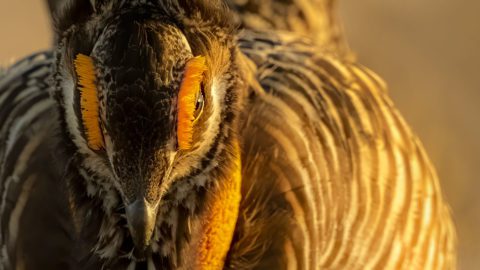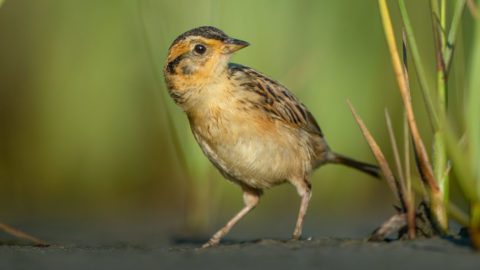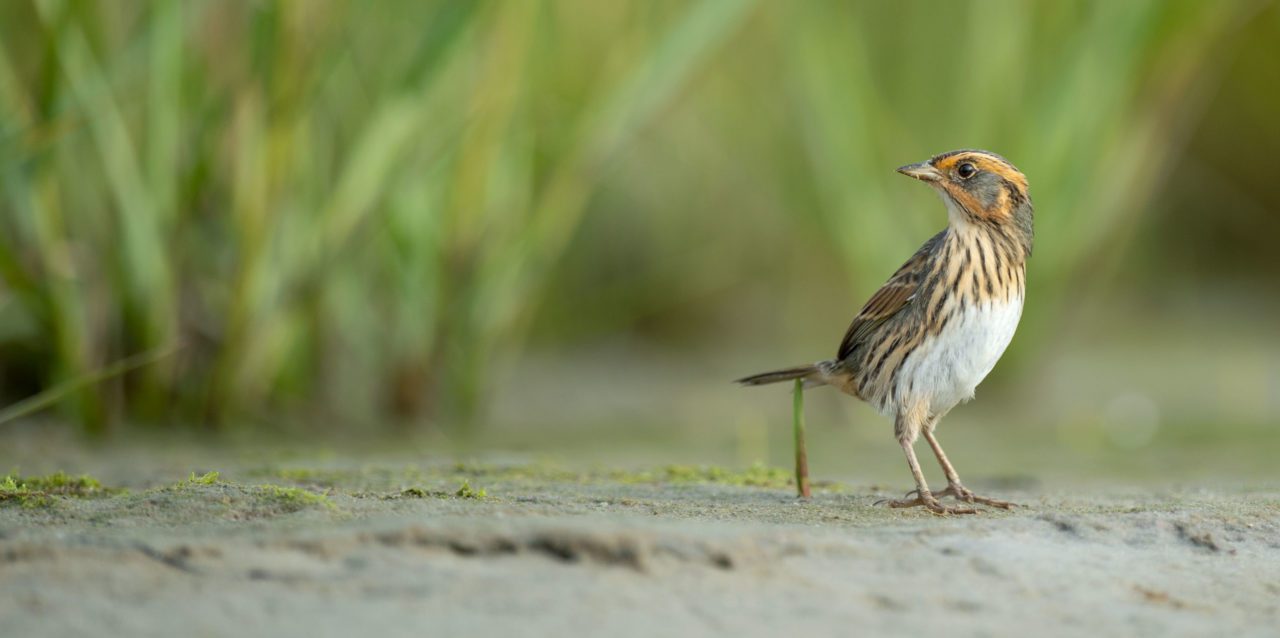Surviving and Thriving in a Saltmarsh—Here’s How 4 Species Manage It
By Jennifer Walsh
March 31, 2020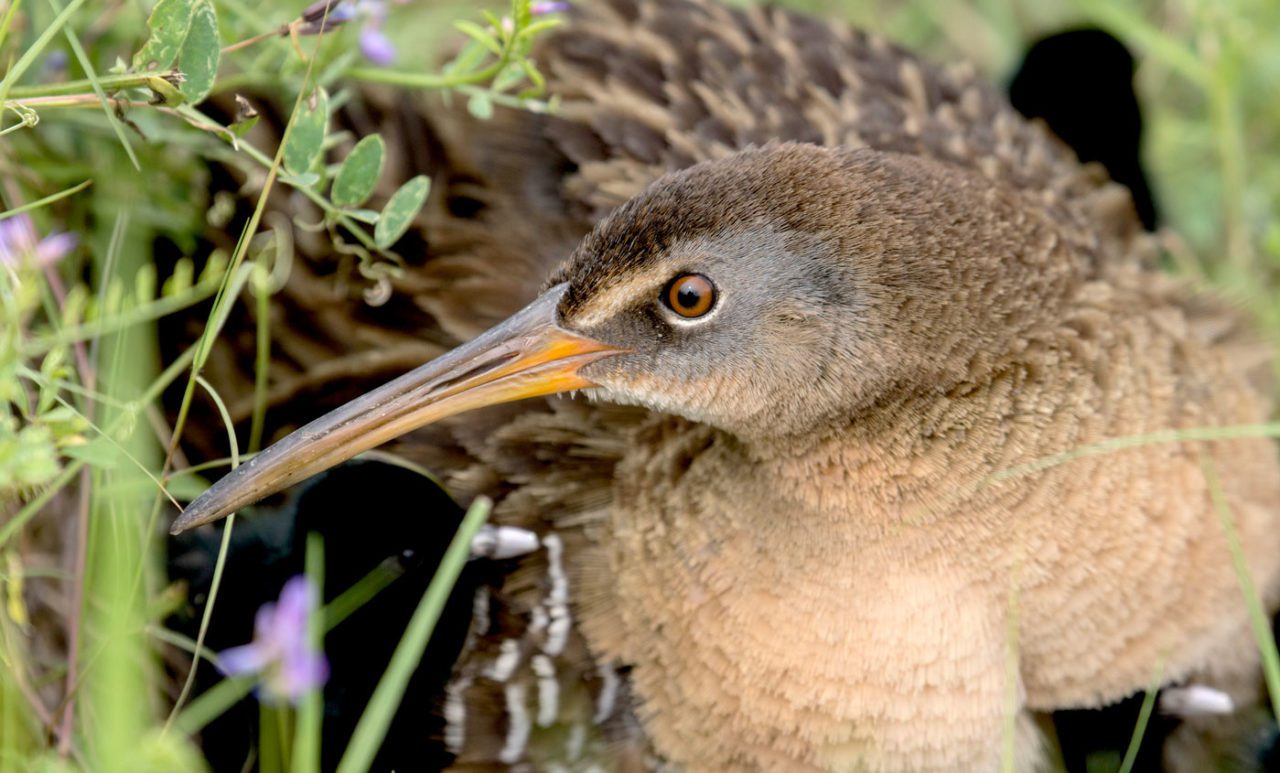
From the Spring 2020 issue of Living Bird magazine. Subscribe now.
Upon first glance, saltmarshes may not seem like the most sensational ecosystems. Their plant and animal diversity is low in comparison to the planet’s biodiversity hotspots. But what these habitats lack in species diversity, they make up for in the specialness of the creatures that live there. The few kinds of birds that do breed in saltmarshes are equipped with special traits to deal with an entire suite of life challenges. Simply said, living on a saltmarsh is fraught with difficulty.
In all the world, only 25 terrestrial vertebrate species or recognized subspecies call the saltmarsh home. What is in it for them? Why live in such a challenging, harsh environment? One answer is that those few who can make a living in this harsh environment benefit by facing little competition from other species.
Saltmarshes are—well—salty, which means that their avian inhabitants are exposed to high levels of salt both in their food and in their drinking water. This is problematic for obvious reasons, since these birds have to either avoid consuming salt or tolerate it. Saltmarsh ecosystems also change literally from day to day, even hour to hour, on cycles dictated by the tides. For birds living on the marsh, their home will be completely submerged under water for a few days every month. What’s more, saltmarshes are filled with abrasive vegetation like cordgrass that wears on feathers, and there are no trees, so saltmarsh birds are exposed to harsh sun and high temperatures. Even though it fills with ocean tides, a saltmarsh ecosystem is actually akin to a desert in terms of lack of freshwater and high exposure to sun. Put it all together, and saltmarshes are a most unwelcome environment for many living things.
Read the Full Story
So it takes a special suite of characteristics to thrive in a saltmarsh—coping strategies for heat, salt, and tides. And while each of the 25 saltmarsh survivors solves these problems in their own way, there are some common themes. Animals that live in saltmarshes are darker than their upland relatives—a phenomenon known as saltmarsh melanism, documented in reptiles, mammals, and birds, which may offer effective camouflage against the marsh substrate. Among birds specifically, the species and subspecies living in saltmarshes have larger bills than their upland relatives as a thermoregulatory coping mechanism. A larger bill surface area allows for greater evaporative heat loss, the avian equivalent of how sweating in humans cools us off.
Saltmarsh birds sport a number of other cool evolutionary tricks, all adaptive pathways toward the same three key objectives: stay cool, cope with salt, and keep the nestlings dry when the tide comes in.
Saltmarsh Sparrows Sync Their Nests with Tidal Patterns
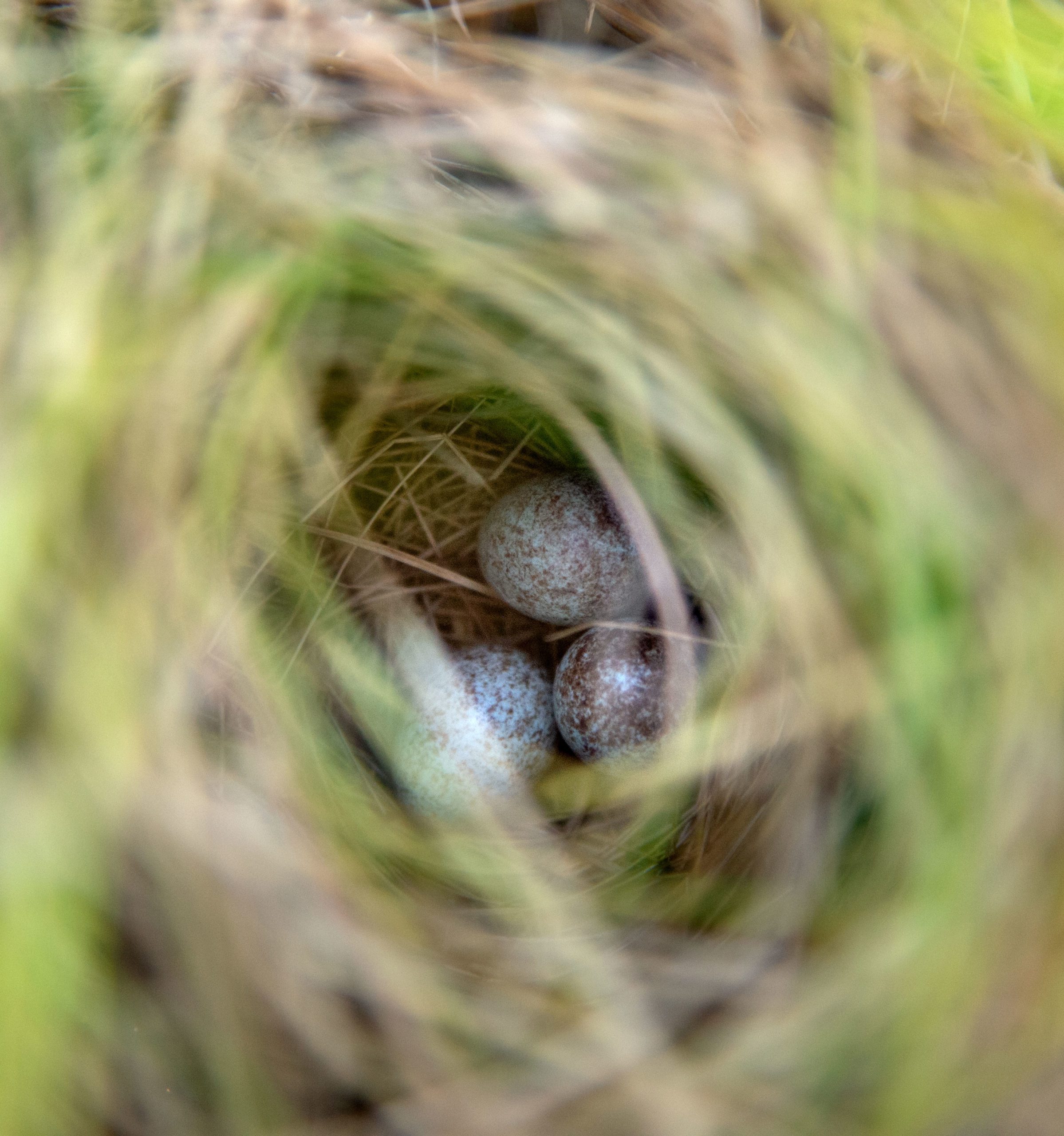
Saltmarsh Sparrows are wonderfully adapted to their saltmarsh environment, though they are now facing serious challenges from sea-level rise that is eliminating their essential habitat. Thousands of years of evolution have given these sparrows adaptations that help them thrive in the saltmarsh, including a relatively short nesting cycle (24 to 26 days from egg laying to fledging) that is almost the exact length of the lunar cycle, which allows these birds to complete their nesting between the highest tides. During the breeding season, the female Saltmarsh Sparrow will build her nest on the ground, tucked tightly within the cordgrass, and hope for the best. If her first nest floods (which it frequently does), she will renest immediately (within a day or two of the flood), thereby syncing her nesting efforts with the tides so that her later chicks will hatch, develop, and fledge before the water fully inundates the saltmarsh on the next full moon.
Even if her nesting cycle isn’t perfectly synced with the tides, the female Saltmarsh Sparrow has a few additional tricks. Her eggs can remain viable even if submerged for as long as 90 minutes, surviving both a loss of oxygen and the drop in temperature. And once the newly hatched Saltmarsh Sparrows are only seven days old, they are able to clamber out of the nest and perch on the overhanging marsh grass—staying high and dry above the water until the tides recede.
Song Sparrows Nest Earlier in Spring, When Peak Tides Are Lower
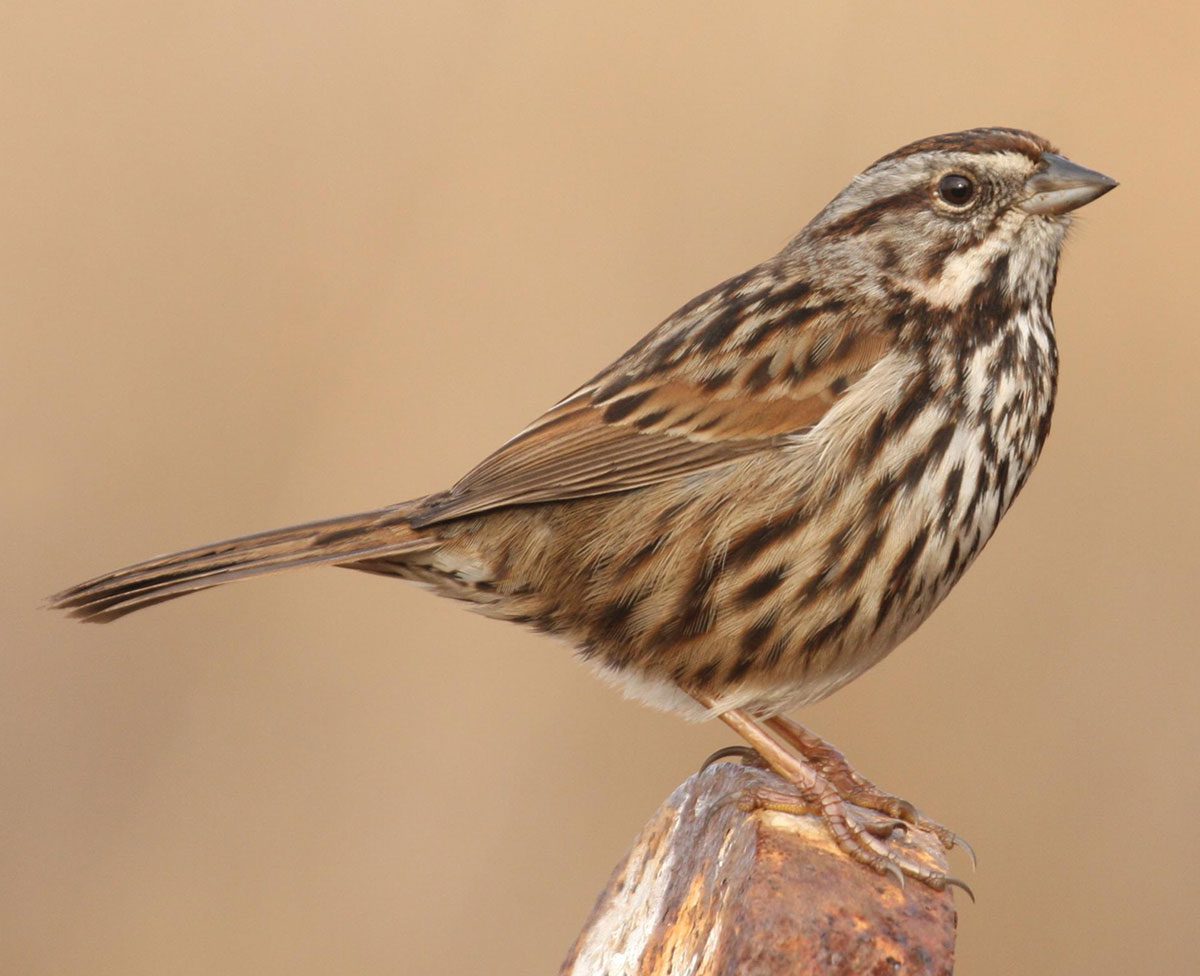
The Song Sparrow is one of the most common backyard birds from coast to coast, but not all Song Sparrows are the same. There are more than 25 recognized Song Sparrow subspecies across North America, including three subspecies that are only found in the tidal marshes of San Francisco Bay. The San Pablo Song Sparrow, Suisun Song Sparrow, and Alameda Song Sparrow subspecies each live in a different arm of the bay, and much like the Saltmarsh Sparrows on the East Coast, they have adjusted their nest timing to accommodate the tides.
Tides in San Francisco Bay are semi-diurnal (two high and two low tides every day). There is annual variation in the range of tide heights, however, with tides being highest from December to January and from June to July, and lowest in March and September. The Alameda and San Pablo Song Sparrow have shifted their breeding cycle to sync with the lowest tides in March (more than two weeks earlier than upland Song Sparrows living nearby). By shifting their nesting cycle, these two Song Sparrow subspecies prevent nest loss through flooding.
On the other side of the bay, the Suisun Song Sparrow has its own solutions to the saltmarsh extremes. Here in the Suisun Bay (which, for reasons related to weather patterns, is not always cool like the other parts of San Francisco), temperatures can soar into the high 80s—about 10 degrees warmer than the other arms of the bay. Accordingly the Suisun Song Sparrow has a relatively larger bill—28% larger than the Alameda and San Pablo subspecies, and larger than the bills of Song Sparrows farther inland as well.
All this variation within a single species in such a relatively small area is really quite amazing, given that the Alameda, San Pablo, and Suisun subspecies all are found within less than 0.0008% of the Song Sparrow’s total range.
Clapper Rails Desalinate Their Own Water Supply
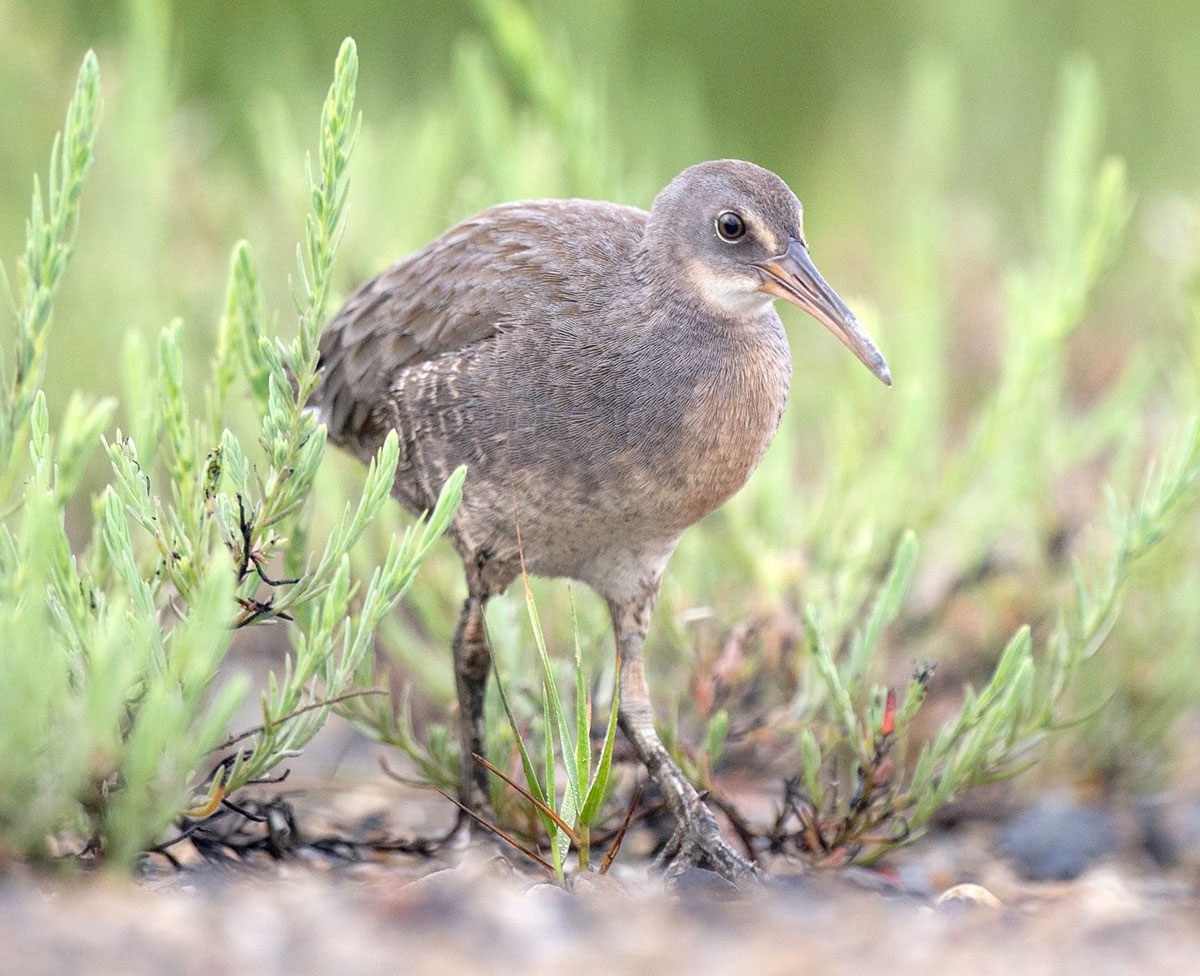
The Clapper Rail is found in saltmarshes and mangrove swamps from the East Coast of the United States to the Caribbean and Central America. These secretive marsh birds spend much of their days walking through the reeds and dense vegetation along the saltmarsh substrate, rarely taking flight. As such, they spend a lot of time in saltwater.
Clapper Rails, like their freshwater counterpart the King Rail, have glands in their bills through which they can excrete salt, but the nasal salt glands of the Clapper Rail are significantly larger. These glands are similar to kidneys in that they filter blood and concentrate salt ions—a critical task in their hyper-salty environment. Studies comparing Clapper and King Rails have shown that Clapper Rails excrete salt from the nostrils in their beaks more quickly and at higher concentrations than their freshwater relatives.
Like the sparrows, the Clapper Rail faces the risk of nest inundation from incoming tides. When their nest floods, Clapper Rail pairs assess the damage and make repairs—with males hastily adding material to raise the nest even while females continue to incubate. Clapper Rail eggs also remain capable of hatching even when they are submersed in water. Once the eggs hatch, nestlings avoid the water by hitching a ride on the backs of their parents during tidal flooding.
Red-winged Blackbirds Raise Their Young Faster, With More Help From Males
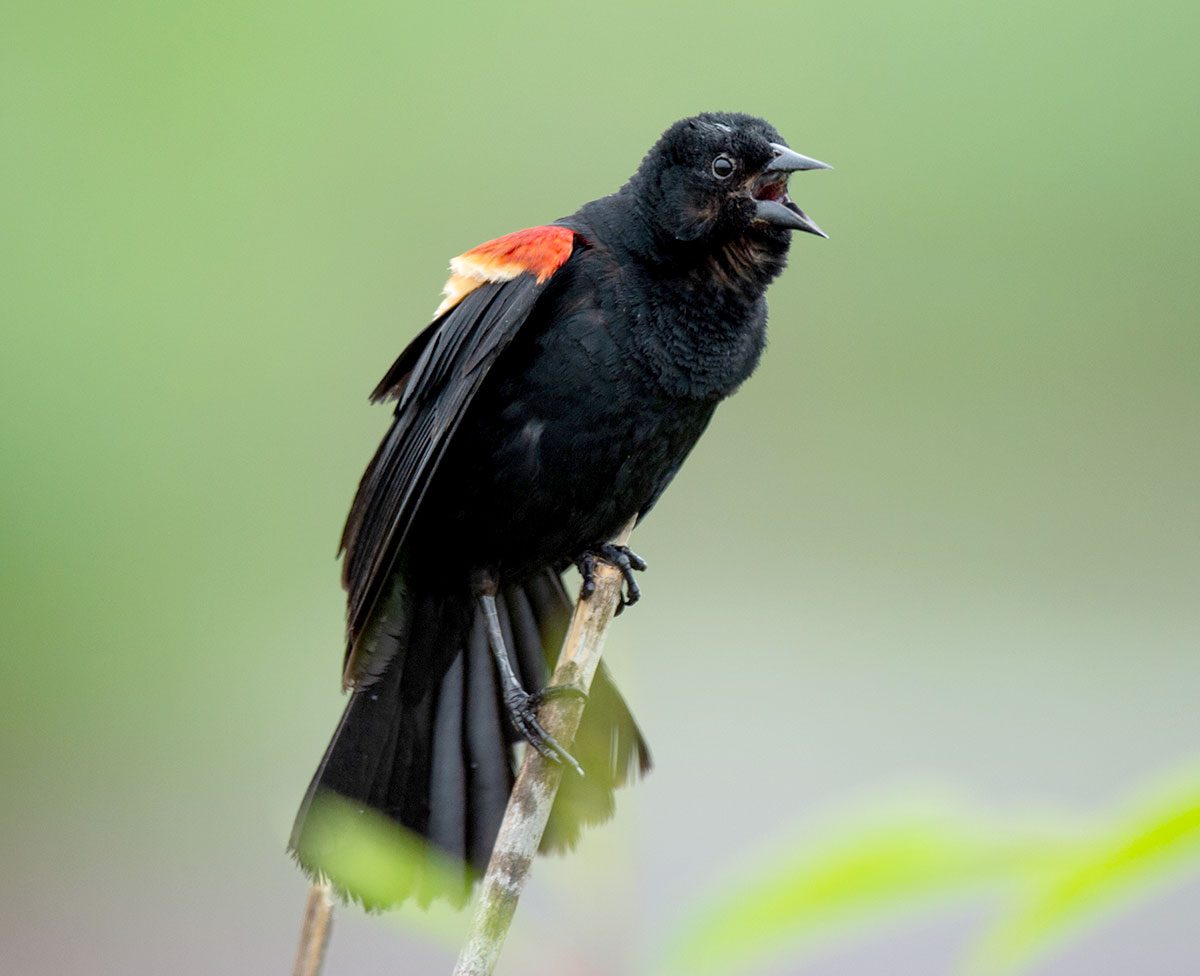
Like Song Sparrows, Red-winged Blackbirds can be found all across North America, but there are red-wing populations in the Northeast that have adapted to breed in saltmarshes. While these saltmarsh Red-winged Blackbirds do not look different from the upland populations, they are equipped with several strategies to handle the tides.
As with many other saltmarsh species, Red-winged Blackbird eggs remain viable after being inundated with saltwater. Red-winged Blackbirds in a saltmarsh also fledge their young earlier than the red-wings that live in nearby freshwater marshes. Perhaps the key difference— in saltmarsh populations, the male Red-winged Blackbird has a smaller harem (or breeding relationships with a group of females) than the red-wings at freshwater sites. With fewer females and nests to attend to, the saltmarsh red-wing males help out more by bringing food to the nest far more frequently than their freshwater counterparts.
The saltmarsh female Red-winged Blackbirds also deliver food to their young at a significantly faster rate than females in interior populations. This quickened pace of provisioning by both male and female, coupled with increased parental collaboration, means that Red-winged Blackbird nestlings in a saltmarsh grow faster and fledge before the next high tide when the waters rise.
Jennifer Walsh is a Fuller Evolutionary Biology Postdoctoral Fellow at the Cornell Lab of Ornithology. As an evolutionary biologist she has been studying the genetics, behavior, ecology, and conservation of saltmarsh birds for the past 15 years.

All About Birds
is a free resource
Available for everyone,
funded by donors like you
American Kestrel by Blair Dudeck / Macaulay Library
